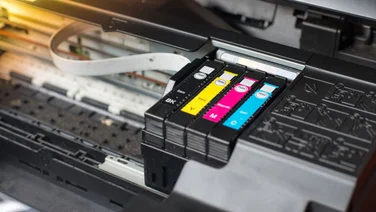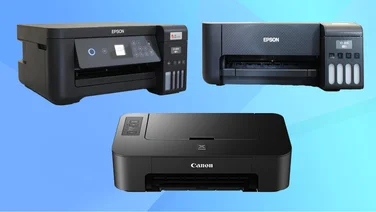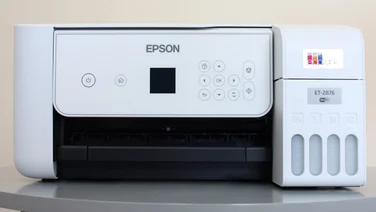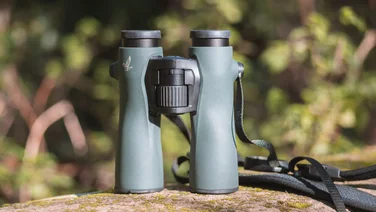To help us provide you with free impartial advice, we may earn a commission if you buy through links on our site. Learn more









The NX100 is part of a new breed of camera – so new in fact that no one seems to agree on what to call them. They’re defined by pocket-sized dimensions, large SLR-style sensors and interchangeable lenses.
The NX100 joins these ranks, already populated by the superb Sony NEX-5, plus various models from Panasonic and Olympus. It also has much in common with the Samsung NX10, sharing lenses with it, but this new model’s compact- rather than SLR-shaped design makes more sense for this type of camera.

The camera body isn’t as slim or as light as the NEX-5 but its kit lens is much stubbier, retracting down to 40mm when not in use. The downsides are a relatively meagre 2.5x zoom range and the lack of optical image stabilisation. Both cameras are also available with non-zooming pancake lenses, making them much more pocket-friendly, although we didn’t have a chance to test the NX100 with its 20mm f/2.8 lens.

Like the NEX-5, there’s no built-in flash, but while the NEX-5 includes an external mini flashgun in the box, Samsung’s one is considerably bulkier and costs an additional £112. The accessory shoe can also house a GPS receiver or an electronic viewfinder. The latter has a basic 201,000-pixel resolution and costs £133.
Samsung makes a big fanfare about the i-Function button that adorns the NX100’s lens. Pressing it switches the role of the manual focus ring to exposure compensation, white balance and ISO speed duties, plus shutter speed and aperture when relevant. It’s a nice idea but we found it a little clumsy to cycle through the various options. The dedicated buttons for exposure compensation, white balance and ISO speed on the back panel proved faster, with the wheel surrounding the navigation pad used to make adjustments.
There’s another dial on the top of the camera, and three rotary controls is an impressive quota for a compact camera. The spot focus area can be moved by pressing the centre of the navigation pad followed by the four directional keys, while the top-mounted wheel adjusts its size. There are further dedicated buttons for exposure lock and depth-of-field preview, while a Function button provides access to resolution, metering and other photographic settings. The superb 3in AMOLED screen presents some smart menus, too, such as an on-screen dial for adjusting the self-timer from two to 30 seconds.

These controls would be impressive on an SLR at this price, so it’s great to find them on a compact camera. Performance was more in line with compact than SLR cameras, though, taking 1.4 seconds between shots and longer in low light where the autofocus struggled to lock onto subjects. The continuous mode started enthusiastically at 2.9fps but lasted for just seven JPEG frames before slowing to 1.2fps. Raw continuous shooting slowed to 0.5fps after just four frames.
The NX100 took some beautiful photos when there was plenty of light. Skies were captured as smoothly gradated tones without any hint of noise, and colours were rich yet natural. The lens produced sharp results into the corners of frames, there was barely any sign of chromatic aberrations and much less barrel and pincushion distortion than from the NX10’s 18-55mm lens. The Auto ISO mode sensibly picked speeds from 200 to 800 in overcast weather to keep the shutter speed at around 1/80th seconds, but this resulted in slightly grainy skin tones and blotchiness on block colours. These problems were only visible under close inspection, though, and weren’t significant at normal viewing and printing sizes.
Indoor photography was a different matter. With no flash or image stabilisation and a not particularly bright f/3.5-5.6 lens, this camera must rely on high ISO speeds in low light to avoid blurry shots. Shooting at ISO 3200, aggressive noise reduction obliterated all the subtlety from photos and drained the colour from less saturated parts of the image, leaving an odd patchwork of colour and monochrome. This problem wasn’t as bad at lower ISO speeds but it was still detectable at ISO 800. Whereas the NEX-5 produced usable results at ISO 6400, the NX100 is only good to ISO 1600. Factor in the NEX-5’s stabilisation and flash and the NX100 can’t hope to compete.

The video mode was disappointing, too. Picture quality was generally high but focus was fixed for the duration of clips and the soundtrack was spoiled by a loud buzz that resembled mains hum. Panning shots suffered badly from rolling shutter, whereby the top of each frame was captured earlier than the bottom, skewing the picture. It’s a problem that afflicts all CMOS sensors, but here it was particularly pronounced. Exposure control for videos is better than usual with access to the aperture, exposure compensation and lock, but there’s no control over the shutter speed.
One of the key benefits of a big sensor is low noise at high ISO speeds, but the NX100 is eclipsed by the Sony NEX-5 in this respect. In fact, conventional premium compact cameras such as the Panasonic LX5 and Canon S95 produce better photos in low light, thanks to their f/2 lenses and optical stabilisation, plus a flash to help out if all else fails. The NX100’s controls are superb but that’s not enough in the face of smaller, cheaper, better quality rivals.





